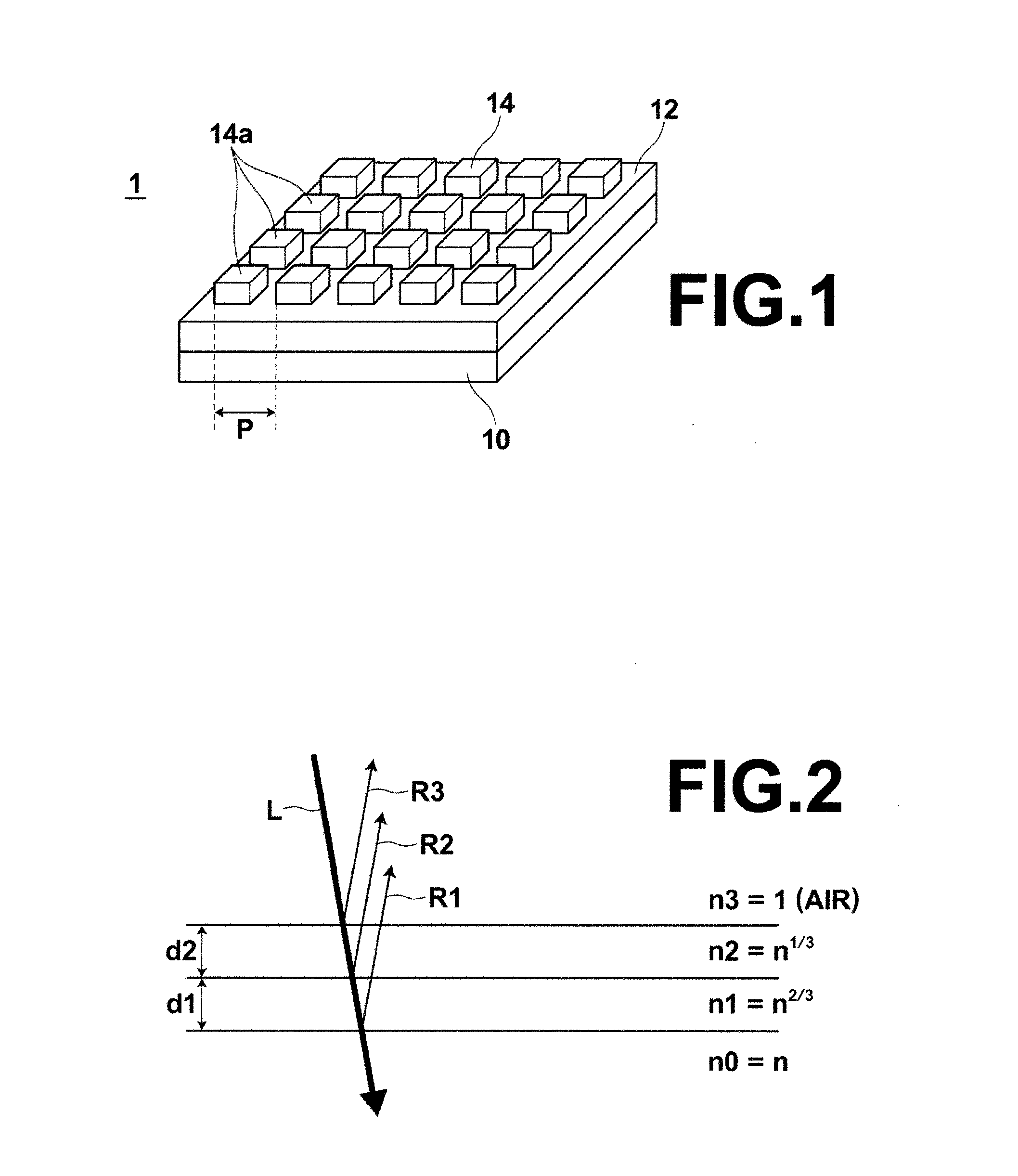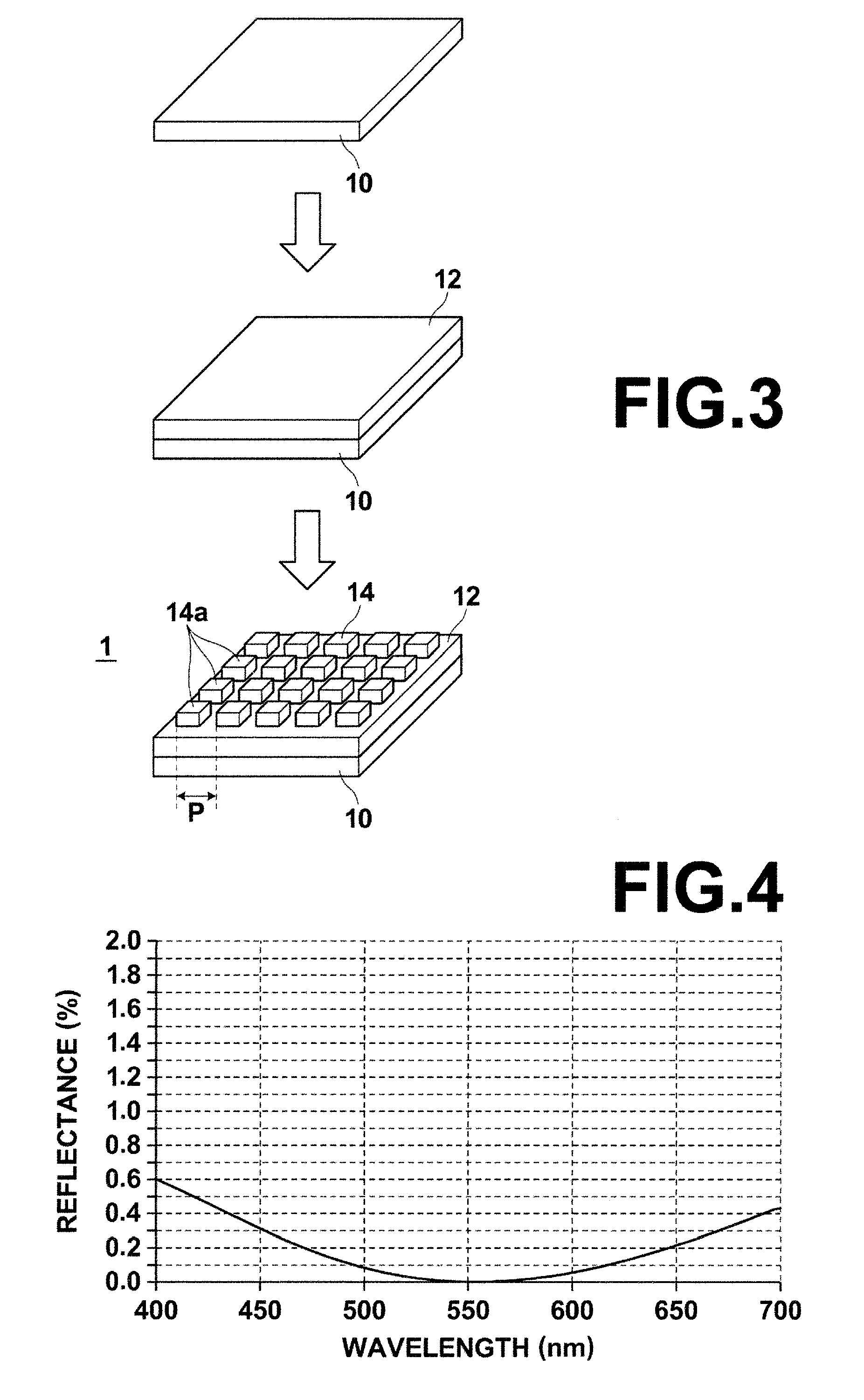Antireflection film
- Summary
- Abstract
- Description
- Claims
- Application Information
AI Technical Summary
Benefits of technology
Problems solved by technology
Method used
Image
Examples
Embodiment Construction
[0032]Hereinafter, one embodiment of an antireflection film of the present invention will be described in detail with reference to the drawings. FIG. 1 illustrates the schematic structure of an antireflection film of this embodiment.
[0033]As shown in FIG. 1, an antireflection film 1 of this embodiment includes, on a transparent glass substrate 10, a first layer 12 and a second layer 14 formed in this order from the glass substrate 10 side.
[0034]First, the basic design concept of the antireflection film 1 of this embodiment is described using FIG. 2. The antireflection film 1 of this embodiment is configured such that average refractive indices of the first layer 12 and the second layer 14 at a design wavelength λ0 decrease in geometric progression from the glass substrate 10 side toward an ambient medium (for example, air) on the light entrance side. Specifically, as shown in FIG. 2, assuming that the glass substrate 10 has a refractive index n0=n and the ambient medium (air) in con...
PUM
| Property | Measurement | Unit |
|---|---|---|
| Thickness | aaaaa | aaaaa |
| Area | aaaaa | aaaaa |
| Wavelength | aaaaa | aaaaa |
Abstract
Description
Claims
Application Information
 Login to View More
Login to View More - R&D Engineer
- R&D Manager
- IP Professional
- Industry Leading Data Capabilities
- Powerful AI technology
- Patent DNA Extraction
Browse by: Latest US Patents, China's latest patents, Technical Efficacy Thesaurus, Application Domain, Technology Topic, Popular Technical Reports.
© 2024 PatSnap. All rights reserved.Legal|Privacy policy|Modern Slavery Act Transparency Statement|Sitemap|About US| Contact US: help@patsnap.com










